
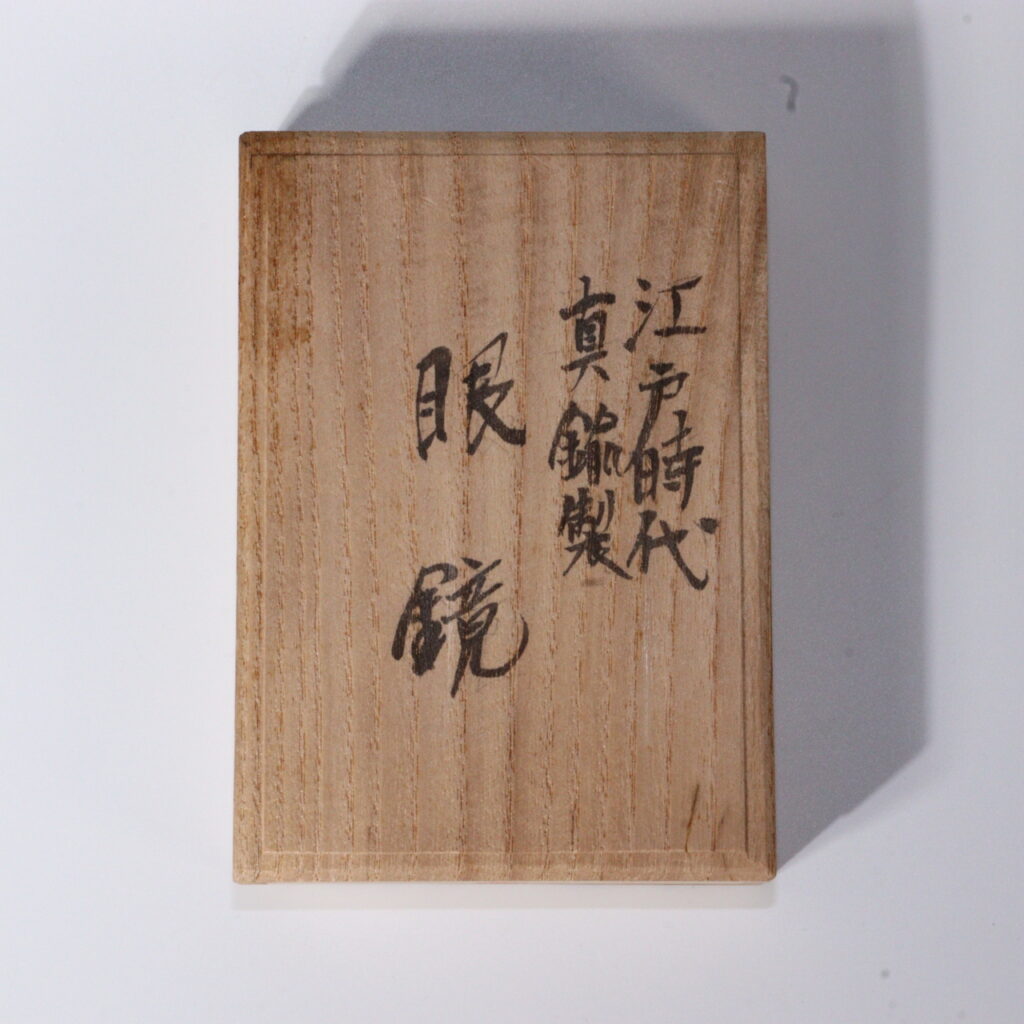
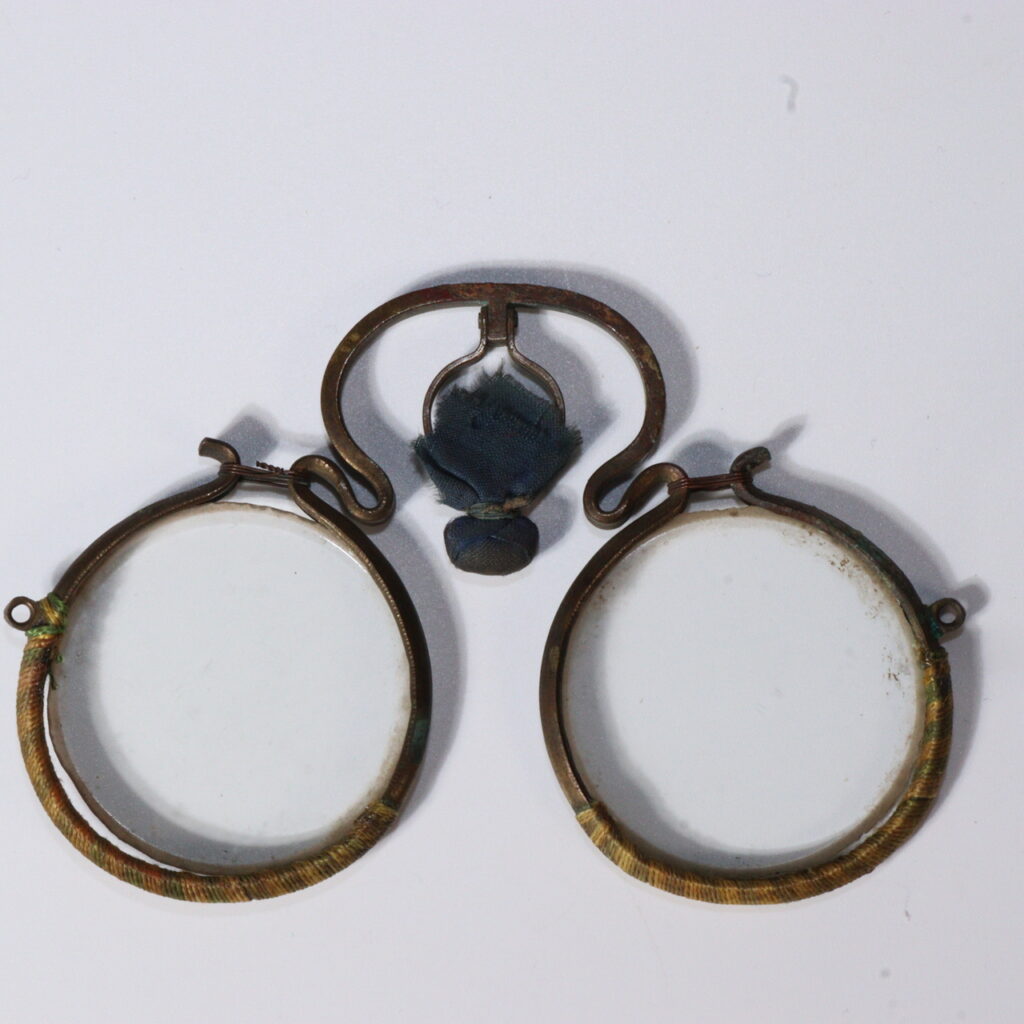
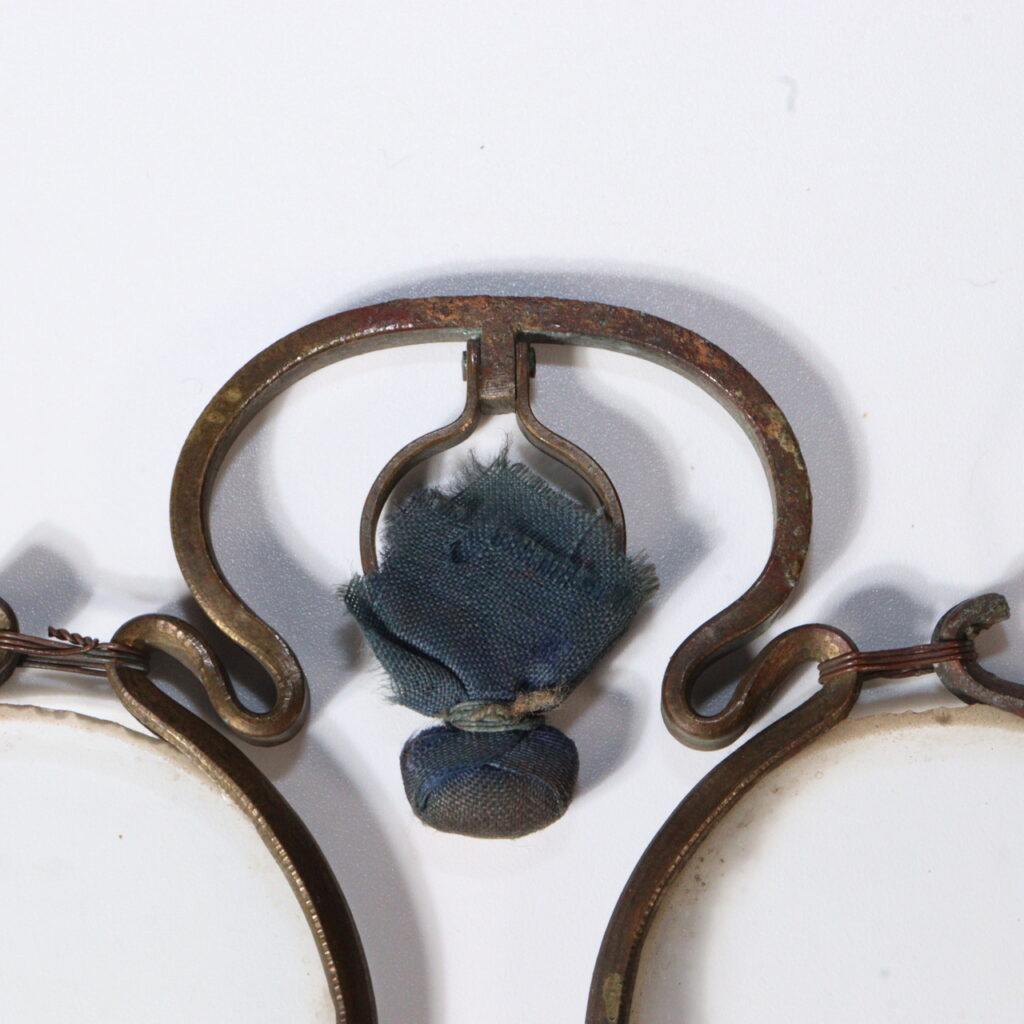
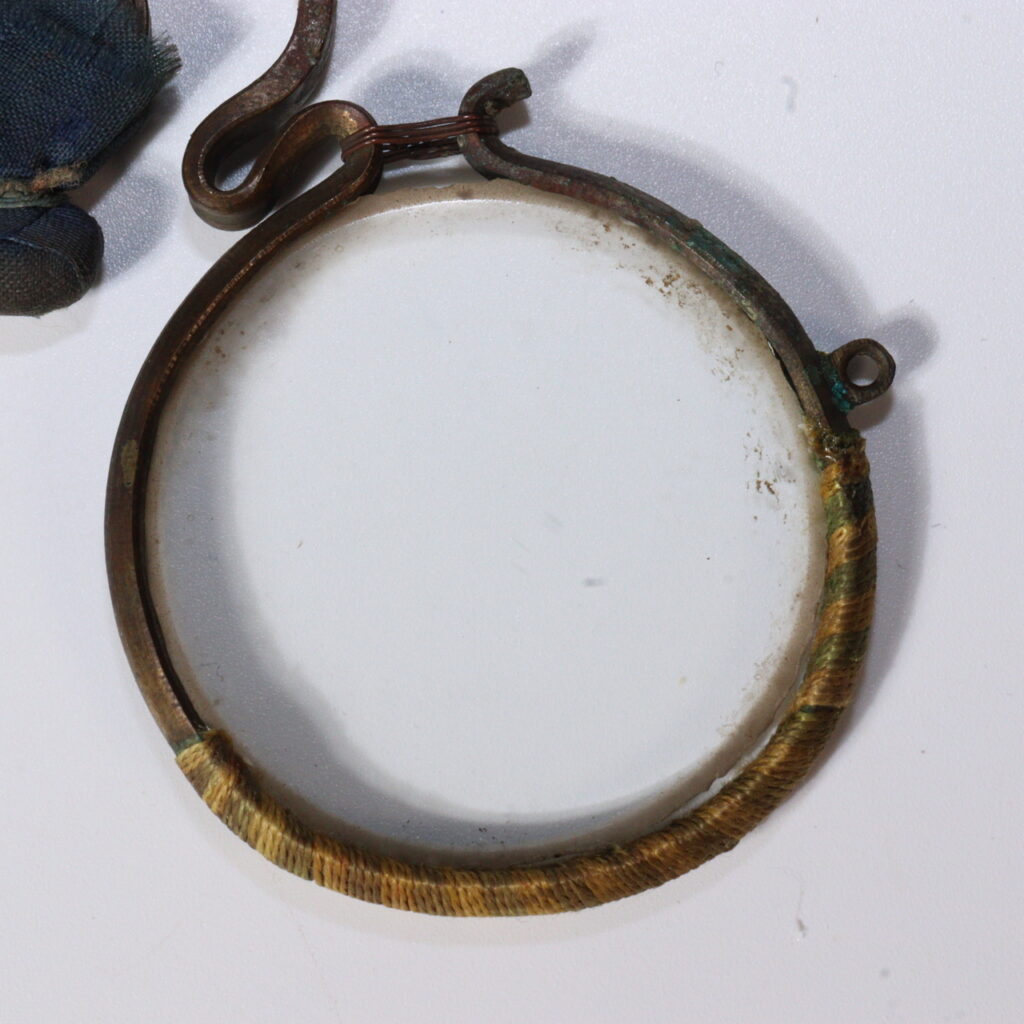
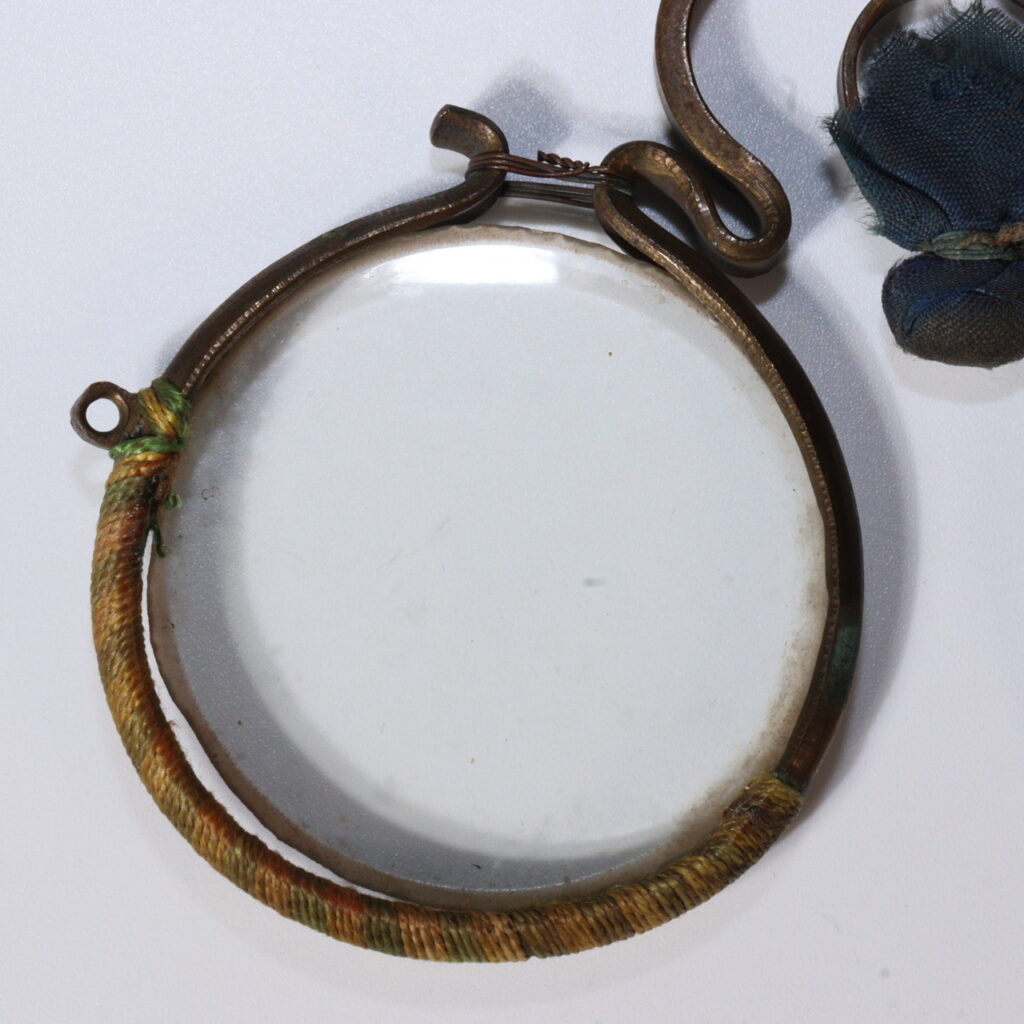
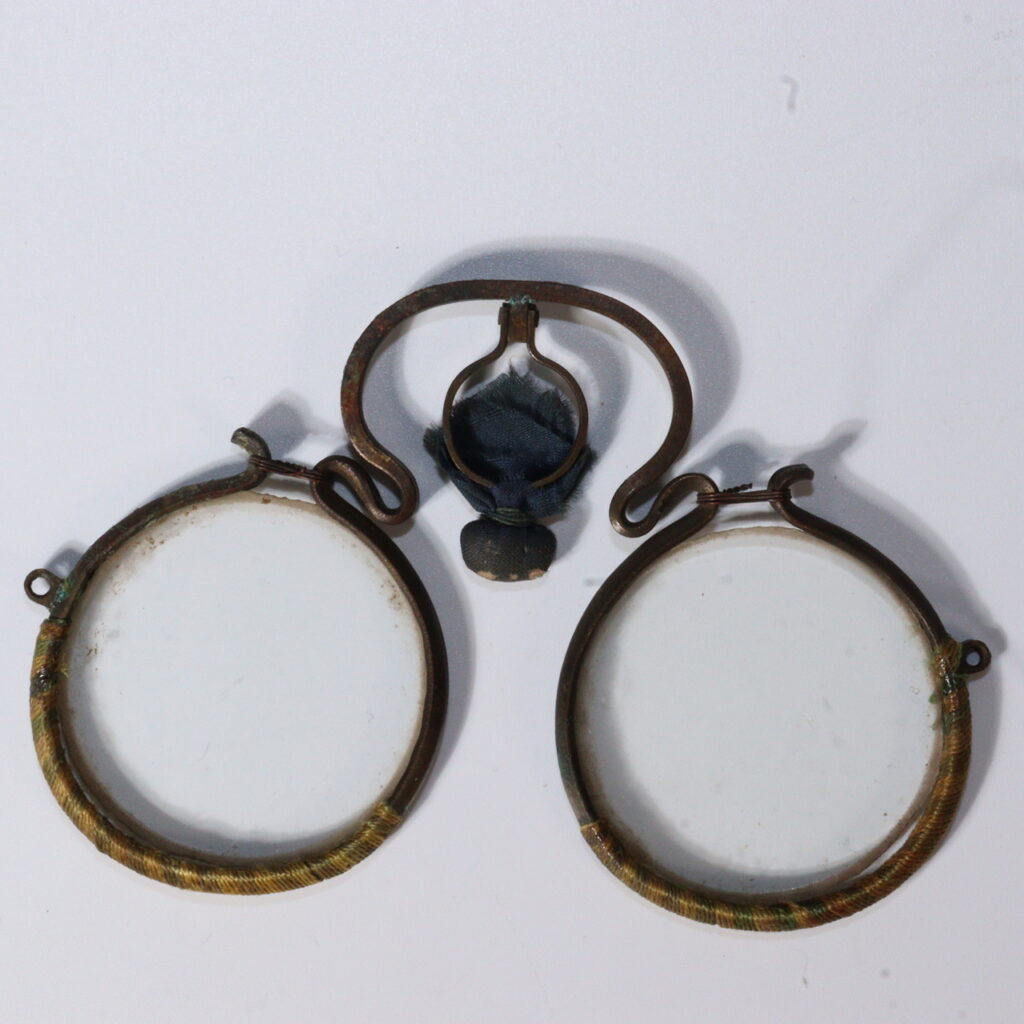
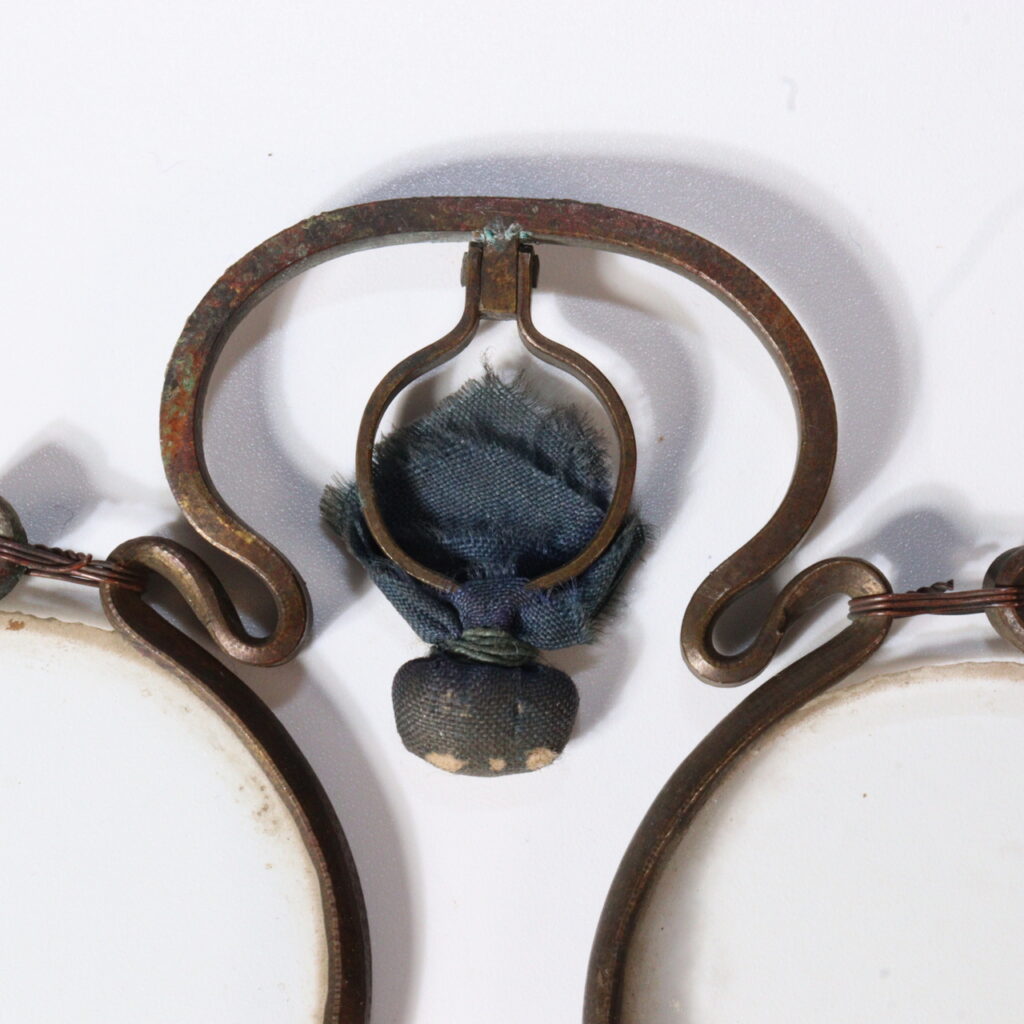

A Window into Edo-Era Vision and Craftsmanship
Among Japanese antiques that reveal the daily lives of people in the Edo period (1603–1868), few are as evocative as a pair of antique brass spectacles. These delicate round glasses, preserved in their original wooden box, are more than optical tools—they are artifacts of intellect, craftsmanship, and the early Japanese encounter with Western science.
The Story Behind This Piece
These Edo-period spectacles (眼鏡, megane) were handcrafted from brass, a material prized for both its resilience and refinement. Their form reflects Japan’s early adaptation of Western technology, introduced through the port of Nagasaki during the late 18th century.
By the mid-Edo era, Japanese scholars and doctors—particularly those studying rangaku (“Dutch learning”)—began using imported lenses for medical observation and reading. Local craftsmen soon began producing their own, combining European optical design with Japanese artisanal sensibility.
This particular pair, stored in a kiribako (paulownia wood box) with calligraphy reading “Edo Jidai, Shinagawa Sei, Megane” (“Spectacles made by Shinagawa, Edo period”), represents the culmination of this fusion. Its compact round lenses and finely worked frame illustrate the era’s dedication to precision and understated beauty—hallmarks of Japanese craftsmanship.
The Beauty and Craftsmanship
The brass frame, aged to a warm patina, bears the marks of hand-forging, where each curve and hinge was shaped by eye and experience rather than machine calibration. Fine silk threads reinforce the lower rim—a subtle aesthetic and functional detail typical of Edo ingenuity.
The bridge design, with its distinctive double-arched loop, is both elegant and ergonomic, reflecting early Japanese experiments with comfort and balance. The spectacles’ minimalist form embodies the principles of wabi-sabi—beauty born from simplicity and the passage of time.
Unlike the mass-produced spectacles of later industrial Japan, Edo-period glasses were made individually for scholars, monks, or physicians, each lens carefully ground to match its owner’s needs. They were often seen as symbols of intellect and refinement, much like a writing brush or a calligraphy seal.
Its Value for Collectors Worldwide
For collectors and historians, this piece offers a rare intersection of art, science, and social history:
- Cultural heritage: A tangible link to the intellectual world of the Edo period and Japan’s early modernization.
- Traditional craftsmanship: Hand-forged brass, silk reinforcement, and meticulous lens fitting—each aspect reflecting Edo artisanship.
- Historical symbolism: Spectacles represented knowledge, literacy, and the quiet dignity of study in a pre-industrial society.
- Aesthetic presence: The contrast between the golden brass and the indigo silk lining of its original box evokes timeless refinement and restraint.
- Curatorial appeal: Ideal for museum display or private collections focused on Edo daily life, rangaku, or the evolution of Japanese design.
This pair exemplifies the Japanese ability to absorb foreign ideas while preserving local artistry—a balance that continues to define the nation’s creative legacy today.
Conclusion & Product Link
This Edo-period brass spectacles set offers more than visual aid—it opens a window to an age when learning was sacred, and craftsmanship was devotion. Every curve and scratch speaks of human touch and the enduring pursuit of clarity, both optical and philosophical.
👉 View this item here:
https://koedo-sun-art.com/search?q=VG356&options%5Bprefix%5D=last
If this piece has already found its new home, please explore other Japanese antique collections here:
🔗 https://koedo-sun-art.com